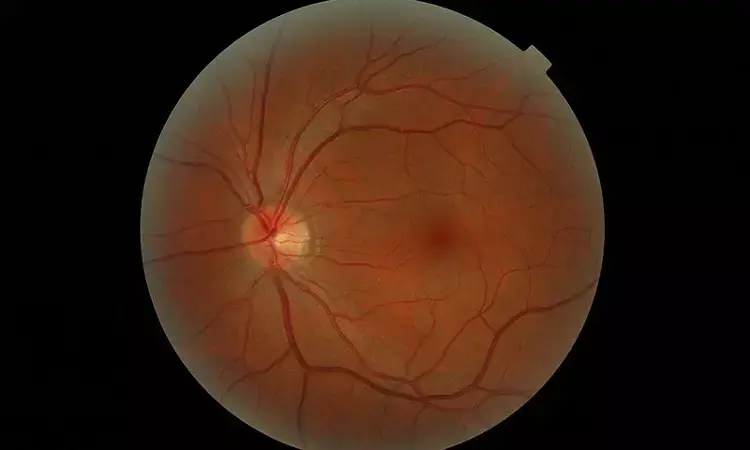- Home
- Medical news & Guidelines
- Anesthesiology
- Cardiology and CTVS
- Critical Care
- Dentistry
- Dermatology
- Diabetes and Endocrinology
- ENT
- Gastroenterology
- Medicine
- Nephrology
- Neurology
- Obstretics-Gynaecology
- Oncology
- Ophthalmology
- Orthopaedics
- Pediatrics-Neonatology
- Psychiatry
- Pulmonology
- Radiology
- Surgery
- Urology
- Laboratory Medicine
- Diet
- Nursing
- Paramedical
- Physiotherapy
- Health news
- Fact Check
- Bone Health Fact Check
- Brain Health Fact Check
- Cancer Related Fact Check
- Child Care Fact Check
- Dental and oral health fact check
- Diabetes and metabolic health fact check
- Diet and Nutrition Fact Check
- Eye and ENT Care Fact Check
- Fitness fact check
- Gut health fact check
- Heart health fact check
- Kidney health fact check
- Medical education fact check
- Men's health fact check
- Respiratory fact check
- Skin and hair care fact check
- Vaccine and Immunization fact check
- Women's health fact check
- AYUSH
- State News
- Andaman and Nicobar Islands
- Andhra Pradesh
- Arunachal Pradesh
- Assam
- Bihar
- Chandigarh
- Chattisgarh
- Dadra and Nagar Haveli
- Daman and Diu
- Delhi
- Goa
- Gujarat
- Haryana
- Himachal Pradesh
- Jammu & Kashmir
- Jharkhand
- Karnataka
- Kerala
- Ladakh
- Lakshadweep
- Madhya Pradesh
- Maharashtra
- Manipur
- Meghalaya
- Mizoram
- Nagaland
- Odisha
- Puducherry
- Punjab
- Rajasthan
- Sikkim
- Tamil Nadu
- Telangana
- Tripura
- Uttar Pradesh
- Uttrakhand
- West Bengal
- Medical Education
- Industry
Re-vitrectomy alone as good as combined re-vitrectomy with scleral buckling in kids with Recurrent RD

In the pediatric population, rhegmatogenous retinal detachment (RRD) is an uncommon ocular condition, accounting for 3– 12% of all retinal detachments. Unlike adults, children with RRD often represent a challenge to the operating surgeon for several reasons. They usually present late with macula-off RRD, proliferative vitreoretinopathy (PVR), and a longstanding retinal detachment resulting from late diagnosis. Furthermore, they often have underlying predisposing factors such as trauma, congenital or structural abnormalities, myopia, and previous ophthalmic surgery that can affect visual prognosis.
Omar Al Abdulsalm and team carried this study published in Clinical Ophthalmology wherein they found re-vitrectomy alone provides similar anatomical and functional outcomes compared to combined re-vitrectomy/ scleral buckling (SB) for pediatric recurrent RRD after failed primary PPV.
This was a retrospective, comparative case series of pediatric patients (under 18 years) who underwent secondary RRD procedures after failed primary PPV. Patients were divided into the re-vitrectomy and the combined re-vitrectomy with SB groups. The primary outcome was the anatomical success rate for each procedure. The secondary outcomes were changes in best-corrected visual acuity (BCVA) and postoperative complications.
In the re-vitrectomy group (30 eyes), the final anatomical success rate was 83.3% (25/30) after a mean follow-up of 21.7 + 6.9 months. The final anatomical success rate in the combined re-vitrectomy/SB group (23 eyes) was 73.9% (17/23) after a mean follow-up of 26.5 + 7.7 months. There was no statistically significant difference in the final anatomical success rate (P = 0.41) and the mean change in BCVA (P = 0.37) between the two groups. Even though not statistically significant, the combined re-vitrectomy/SB group had a lower incidence of postoperative complications (P = 0.25).
Pediatric RRDs differ from adult detachments in the anatomy, characteristics, ocular and systemic comorbidities, and prognosis. Understanding these differences guides the vitreoretinal surgeon's approach to achieve anatomical success.
SB is generally preferred as the first-line procedure for pediatric RRD because it offers several advantages: significantly less vitreous manipulation and cataracts formation and no need for reintervention in case of silicone oil employment during vitrectomy. PPV for pediatric RRD is more challenging due to the strong vitreoretinal adhesions and few areas with posterior vitreous detachment. Therefore, it is usually reserved for cases not amenable to conventional surgery, such as RRD with severe PVR (grade C or worse), media haze, giant and posterior retinal tears, epiretinal membranes, and colobomas. Besides its primary indications for complex cases, PPV is also performed as a second-line procedure in cases of recurrent RRD.
In selected cases, some authors performed PPV combined with SB as an initial approach when PPV was needed to reduce peripheral tractions due to PVR. In cases with recurrent RRD, surgical intervention is crucial to maintain anatomical integrity and gain functional success, especially in children's future motor and intellectual development.
According to study results, re-vitrectomy alone provides similar anatomical and functional outcomes compared to combined re-vitrectomy/SB for pediatric recurrent RRD after failed primary PPV. Further randomized prospective studies in more patients are needed to compare these two procedures for pediatric recurrent RRD.
Source: Omar Al Abdulsalm , Hussain Al Habboubi2,3 , Marco Mura; Clinical Ophthalmology 2022:16 877–884
Dr Ishan Kataria has done his MBBS from Medical College Bijapur and MS in Ophthalmology from Dr Vasant Rao Pawar Medical College, Nasik. Post completing MD, he pursuid Anterior Segment Fellowship from Sankara Eye Hospital and worked as a competent phaco and anterior segment consultant surgeon in a trust hospital in Bathinda for 2 years.He is currently pursuing Fellowship in Vitreo-Retina at Dr Sohan Singh Eye hospital Amritsar and is actively involved in various research activities under the guidance of the faculty.
Dr Kamal Kant Kohli-MBBS, DTCD- a chest specialist with more than 30 years of practice and a flair for writing clinical articles, Dr Kamal Kant Kohli joined Medical Dialogues as a Chief Editor of Medical News. Besides writing articles, as an editor, he proofreads and verifies all the medical content published on Medical Dialogues including those coming from journals, studies,medical conferences,guidelines etc. Email: drkohli@medicaldialogues.in. Contact no. 011-43720751


